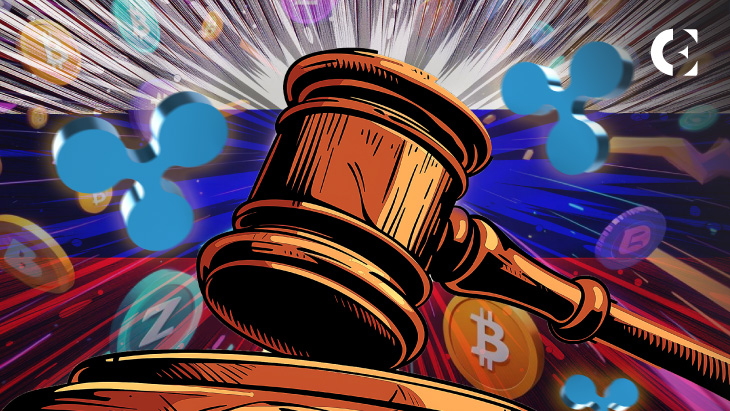- Ripple’s lawsuit outcome may shape Russia’s crypto exchanges and digital finance future.
- Russia’s new exchanges will focus on stablecoins tied to the yuan and BRICS basket.
- Regulatory risks and evolving laws may impact Russia’s crypto sector development.
Russia’s future in the cryptocurrency realm could hinge significantly on the outcome of Ripple’s ongoing legal battles. The nation is poised to launch two new cryptocurrency exchanges, one in Moscow and another in St. Petersburg. This initiative, aimed at boosting Russia’s foreign economic activity (FEA), is anticipated to provide a novel platform for digital transactions, as reported by Kommersant.
Initially, these exchanges will function in a “test mode” with a limited group of users, according to Mikhail Uspensky, a member of the State Duma’s legislative regulation committee for cryptocurrencies.
The new exchanges are expected to eventually cater mainly to large exporters and importers. While this move is likely to enhance Russia’s digital transaction capabilities, access for small and medium-sized businesses, as well as individuals, may be limited initially.
The focus will be on creating stablecoins pegged to the Chinese yuan and the BRICS currency basket. These stablecoins are designed to simplify financial transactions, particularly with Chinese partners, in line with Russia’s strategy to circumvent international sanctions and strengthen compliance measures.
Meanwhile, the Bank of Russia is exploring the legalization of stablecoins for cross-border transactions. Oleg Ogienko from BitRiver highlighted that, under Russian law, stablecoins fall into the category of digital financial assets. This development underscores Russia’s aim to enhance economic cooperation within the BRICS bloc, which includes Brazil, Russia, India, China, and South Africa.
The BRICS bloc has been advocating for a digital currency since its 11th Summit in 2019, with the goal of advancing new financial systems. However, developing a harmonized currency presents challenges such as differing viewpoints among member states on how to implement the union currency.
Despite these positive strides, the project is not without risks. Uspensky has raised concerns about potential transaction exposure and the risk of ending up on sanctions lists. Such exposure could result in the blocking of transactions involving crypto assets bought on these new exchanges.
Furthermore, Russia’s regulatory environment for crypto is still taking shape. The country currently operates under Federal Law No. 259, which governs digital financial assets but doesn’t specifically address cryptocurrency exchanges.
Recent legislation in Russia shows a cautious approach to digital assets. Russian President Vladimir Putin has given the green light to a law designed to reduce reliance on the US dollar, taking effect in November 2024. This law includes provisions for mining firm registration and introduces new regulatory frameworks for the sector. It also bans widespread cryptocurrency advertising within Russia.
The recent bill permitting international payments with cryptocurrencies, along with documents from the Central Bank of Russia mentioning Ripple and XRP, suggests a complicated situation for Russia’s crypto goals. At the time of writing, XRP is trading at $0.591540, down 0.71% over the last 24 hours, with a trading volume of $1,064,854,306.
Disclaimer: The information presented in this article is for informational and educational purposes only. The article does not constitute financial advice or advice of any kind. Coin Edition is not responsible for any losses incurred as a result of the utilization of content, products, or services mentioned. Readers are advised to exercise caution before taking any action related to the company.







